 Mysteries
Mysteries  Mysteries
Mysteries  History
History 10 Surprising Stories About the Texas Rangers
 Humans
Humans 10 Philosophers Who Were Driven Mad by Their Own Theories
 Miscellaneous
Miscellaneous 10 Video-Game-Worthy Weapons and Armors from History
 Weird Stuff
Weird Stuff 10 Psychics Who Accurately Predicted Wartime Events
 The Arts
The Arts 10 Pieces of Art Inspired by a Broken Heart
 Health
Health 10 Science Fiction-Sounding New Medical Treatments
 History
History 10 Surprising Facts About the Father of Submarine Warfare
 Space
Space Ten Astonishing New Insights into Alien Worlds
 Weird Stuff
Weird Stuff 10 Bizarre Summer Solstice Rituals Still Practiced Today
 Mysteries
Mysteries Top 10 Haunting Facts About the Ghost Ship MV Alta
 History
History 10 Surprising Stories About the Texas Rangers
 Humans
Humans 10 Philosophers Who Were Driven Mad by Their Own Theories
Who's Behind Listverse?

Jamie Frater
Head Editor
Jamie founded Listverse due to an insatiable desire to share fascinating, obscure, and bizarre facts. He has been a guest speaker on numerous national radio and television stations and is a five time published author.
More About Us Miscellaneous
Miscellaneous 10 Video-Game-Worthy Weapons and Armors from History
 Weird Stuff
Weird Stuff 10 Psychics Who Accurately Predicted Wartime Events
 The Arts
The Arts 10 Pieces of Art Inspired by a Broken Heart
 Health
Health 10 Science Fiction-Sounding New Medical Treatments
 History
History 10 Surprising Facts About the Father of Submarine Warfare
 Space
Space Ten Astonishing New Insights into Alien Worlds
 Weird Stuff
Weird Stuff 10 Bizarre Summer Solstice Rituals Still Practiced Today
Crazy Ways Past Cultures Saw Human Sexuality
Some people talk about the past like it was a free-for-all of love and expression. They imagine a time when sexuality had no bounds and nothing was forbidden. We think of it that way because we see the past as a reflection of our present—but it isn’t.
The cultures of the past weren’t some paradise of freedom; they were just different. Ancient peoples had taboos of their own as well as their own ideas of what was right and wrong. A lot of those values aren’t what you think, and they’re wildly different from how we see the world today. But if you’d grown up in any of these cultures, odds are you’d have seen the world the same way.
10 Ancient Greece
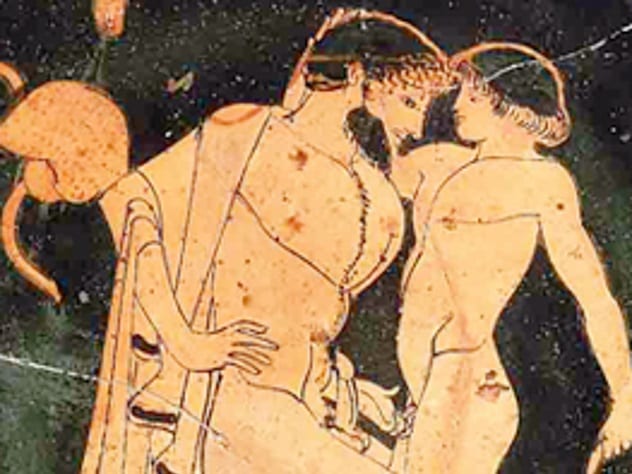
It’s been said that the ancient Greeks had “no concept of homosexuality,” and in a way, it’s true. It was perfectly normal for an ancient Greek man to take a boy as a lover, and some have even said that man-boy love was the cornerstone of how Greek culture functioned. The Greeks were perfectly okay with two males being in love—as long as one of them was a child.
If two consenting male adults were in a relationship, though, the Greeks thought it was a little strange.[1] One partner, they believed, had to take a role of a “woman,” and any man over 17 years old who was willing to take a backseat role was considered a little weird. They wouldn’t stone you death for it, but people would talk.
One of the best examples of adult male love in the Greek world was the Sacred Band of Thebes, a group of warriors who strengthened their bond by becoming lovers. In a toast to their bravery, one Greek said, “Perish any man who suspects these men either did or suffered anything that was base.” He was defending them, but the implication is that most people thought they were doing something “base” and disgusting.
After all, they were grown men in love, and in ancient Greece, that was odd. It would have been one thing if they had some children in there, but a bunch of grown consenting men, to the ancient Greeks, was just plain bizarre.
9 Ancient Rome
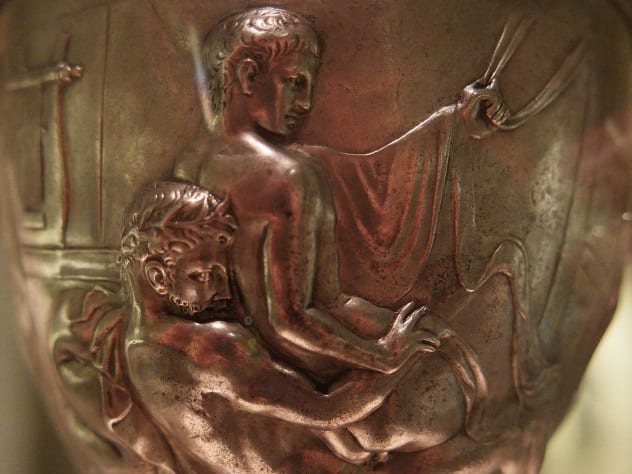
The Romans’ views were similar to the Greeks, but they were a little less accepting. Men could sleep with slave boys or with teenage male prostitutes, but any adult male who was willing to be on the receiving end was considered effeminate or even pathologically ill.
Their attitude to lesbians, though, was even stranger. A lot of Romans simply didn’t believe lesbians existed. The poet Ovid called lesbianism “a desire known to no one,” musing that, “among all animals, no female is seized by desire for female.”[2]
When they had to face the reality that lesbians existed, they were disgusted by it. Roman writers—who, of course, were men—called lesbians “against nature” and “an abuse of their sexual powers.” One even said that being a lesbian was as perverse as having sex with a dead animal.
8 Native Americans
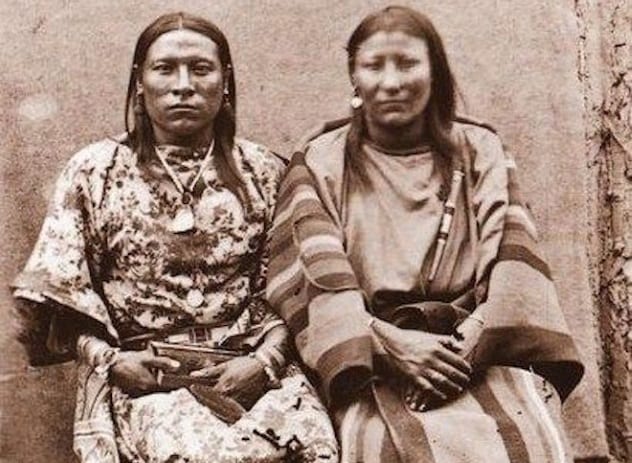
The phrase “two-spirited” has become an LGBT catchphrase. It’s something a lot of people embrace, imagining a precolonial America in which LGBT people were celebrated. In a way, they were—but it was a bit different than most people imagine.
The concept of “two-spirited” people existed in about 130 North American tribes, which is a lot, but there were more than 500 tribes, so it was by no means the majority. Every tribe was different, too, so the details were never exactly the same.
Generally, though, a two-spirited person was someone who didn’t fit gender norms. If a young boy showed an interest in sewing, for example, or a girl showed an interest in hunting, some tribes would say that they had two spirits and would give them a special role in the community.
A two-spirited man might end up wearing women’s clothing and doing a woman’s work, but he wasn’t necessarily gay. It was perfectly natural for a two-spirited person to be heterosexual or even to switch between male and female clothes from day to day.[3]
7 Ancient China

Of every culture, ancient China’s seems to be closest to that paradise of liberal sexuality that we like to imagine once existed, but it’s still not quite the same as our culture today.
Ancient China did have male concubines and prostitutes, who were valued for their looks. One Chinese story tells about Mizi Xia, a concubine of the king of Wei who could do no wrong, until his looks faded, and the king turned against him.
Unlike Rome and Greece, nobody thought these relationships were weird. There’s a story about Emperor Ai and his lover Dong Xian, in which Dong Xian falls asleep on the emperor’s sleeve. Not wanting to wake his lover, the emperor cut off his sleeve and sneaked away. The whole court, touched by the story, showed their support by cutting off their sleeves in tribute.
That all sounds pretty accepting, but in all of these stories, the men are concubines or fleeting passions and almost never life partners. And, usually, both men have wives and children.[4] These men could have an affair, but in their culture, they had a duty to procreate. Having a male lover on the side in ancient China was okay—but they were still expected to marry women.
6 Mesopotamia

There was a law in Assyria that said if a man lays with a male neighbor, he shall be made into a eunuch. That seems pretty cut-and-dry: Homosexuality, in Assyria, was against the law. In practice, though, it was a bit more complicated.
Men couldn’t sleep with their neighbors, but there were male prostitutes everywhere in Assyria. They even had cross-dressing priests whose whole jobs were to be taken as lovers, and sleeping with them was considered perfectly fine.
The best insight we have into Assyrian sexuality comes from a manual meant to predict someone’s future. Sleeping with a male prostitute, is says, is a good omen, but it warns against falling in love. If “mating with men becomes his desire,” it says, a man will “experience evil.” That suggests that homosexuality was okay—but only if it was with a prostitute.
Here’s where it gets really strange. Falling in love with men may have been bad, but the best omen was this: “If a man copulates with his equal from the rear,” the book promises, “he becomes the leader among his peers and brothers.”[5]
Love between two men in Assyria, it seems, was a bit more like the rules for a prison cell than a loving home.
5 Medieval Japan
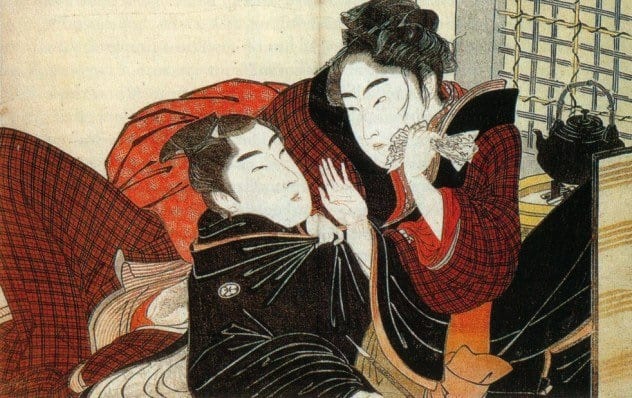
By the 14th century, Japanese samurai had started taking their proteges as lovers. Usually, this was similar to the relationships you’d see in Greece: an older man with a younger boy. It was so common that one samurai said, “A young man without a pledged, elder he-lover is likened to a young girl without a fiance.”[6]
Unlike the Greeks, however, the Japanese were tolerant of adult male love. A pair of aging male lovers, they said, were like “two old cherry trees still in bloom.” Medieval Japan was an incredibly tolerant place for homosexuality.
Heterosexuality, though, was another matter. Some Japanese men were almost intolerant of male-female love. Like the Chinese, they were expected to marry women, but some treated it like a terrible burden.
Male love versus female love was a common topic of debate, and while different people had different opinions, some men were pretty misogynistic about it. One, condemning heterosexuality as frivolous, wrote, “A woman is a creature without any importance whatsoever, while sincere homosexual love is true love.”
4 Medieval Europe

We usually think of medieval Europe as a place where any deviation in human sexuality had to stay hidden in the shadows, but that wasn’t always the case. While the Europeans were generally against homosexuality, they were aware it existed, and they had a few workarounds.
The French, in particular, had an institution called affrerement. Two men would pledge to live together with one bread and one purse. They would share a home, hold joint property, be one anothers’ legal heir, and live in every way like a married couple. Officially, this was meant to be a way for two brothers to live together, but it didn’t end up being used that way. Instead, men who weren’t related would use it to marry one another, usually as lovers.[7]
These people didn’t live in the shadows. The community knew that they were living together, and they accepted what was going on. It would be under a thin—but transparent—veil that no one felt the need to tear down.
3 The Islamic Golden Age
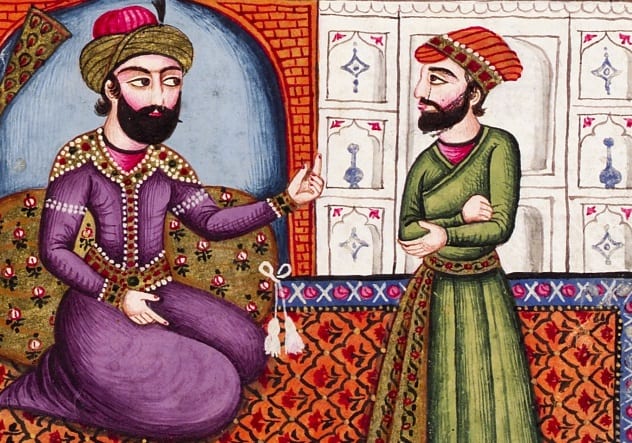
The Quran isn’t exactly ambiguous about human sexuality. If you “come to males in lust,” it says, you “commit an indecency.” There might be some debate on the details of what that means, but the core idea is pretty clear: Homosexuality is frowned upon.
What a culture believes, though, isn’t always what it practices, and the Islamic Golden Age had a bit more variety than you might be imagining. There was a class of men called the mukannathun, who were said to “resemble women” and were “promiscuous” lovers of other men.
Muhammad didn’t care for them; he banished them from the land. Later rulers, though, had a different attitude. Some rulers, like Caliph Al-Amin, were openly gay. Officially, it was frowned upon, but people were willing to throw a blind eye.
Later on, the mukannathum were accepted as part of society. They were often musicians, and they had a major impact on the culture of the era. One Islamic philosopher, Al-Kirmani, even wrote that some people were just born that way.[3]
2 The Victorian Era

The Victorian era was a bit complicated. In practice, it wasn’t as strict and stuffy of a place as we usually imagine. There were somewhere between 20,000 and 50,000 prostitutes in London alone, so people certainly weren’t staying chaste.
Some people were celibate, though, and that’s why the era has the reputation it does. Even if the common man was as red-blooded as ever, the extremists were incredibly repressed—and probably nobody more so than John Kellogg, one of the two men behind your favorite breakfast cereals.
Kellogg’s true passion was getting people to stop touching themselves, which he saw as an absolute and complete sin. He never touched his own wife or himself, and he took some serious measures to keep from doing so. He recommended circumcising pubescent boys without anesthetic so that they connect the pain to the idea of being punished for touching themselves.
For women, he suggested that “the application of pure carbolic acid to the clitoris” was a good way to get them to calm down their urges.[9] And, for adult men, he suggested sewing the foreskin shut in a way that would make having an erection completely impossible.
Of course, for every John Kellogg, there was a man browsing London’s 50,000 prostitutes, but that’s how the Victorian era was: full of extremes.
1 Ancient Egypt
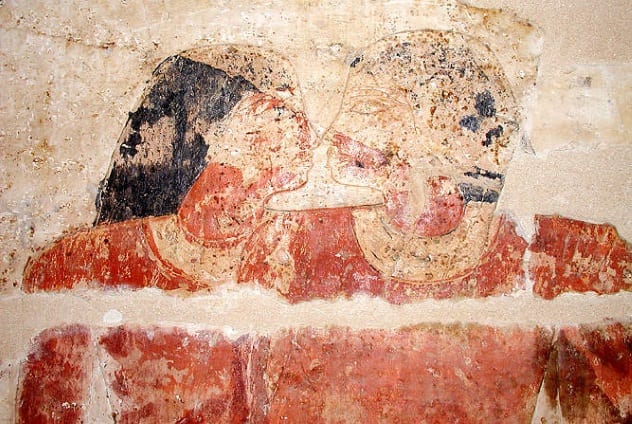
When two ancient Egyptian men were found buried together in an embrace, people started sharing the story as an example of what a tolerant and wonderful place ancient Egypt must have been, but that story’s a little misleading. Aside from that grave, nothing we know about ancient Egypt makes it sound like a sexually liberated paradise.
There’s one story about a gay Egyptian king, Pepi II, but it’s not written like a celebration of love. The king and his lover have to sneak out at night to meet, and it’s treated like a scandal.
A truly twisted myth, though, gives us the best insight into how Egyptians saw homosexuality, and it’s nothing like the way people see the world today. We’ve already told you the story of Horus and Seth, but basically, Seth wants to steal the throne from his nephew Horus, so he comes up with a plan: He’d sexually assault his nephew. If he did that, he figured, they’d make him king.
That sounds like the ramblings of a madman, but in the story, Seth’s plan works. He tells the court: “Let me be awarded the office of Ruler, for as to Horus [ . . . ] I have performed the labor of a male against him.”[10] Not only does everybody agree, but they actually spit in poor Horus’s face.
To put that in perspective, the Egyptians apparently believed that a pedophilic, incestual rapist was more fit to lead them than a victimized boy. Being gay in ancient Egypt wasn’t inherently bad—but being on the bottom was.
Every Egyptian would have known this story. It would have been a part of their culture that they would have heard from childhood, and it would have influcened the way they saw the world. As strange as they are to us, the values in this story would have made perfect sense to them, just as the values in our stories make perfect sense to us today.








